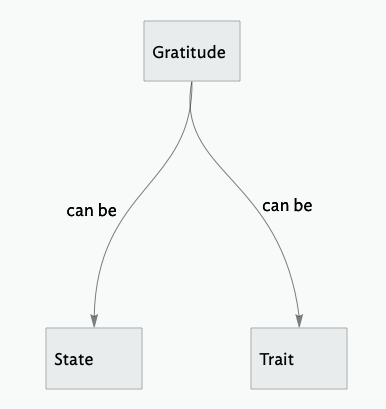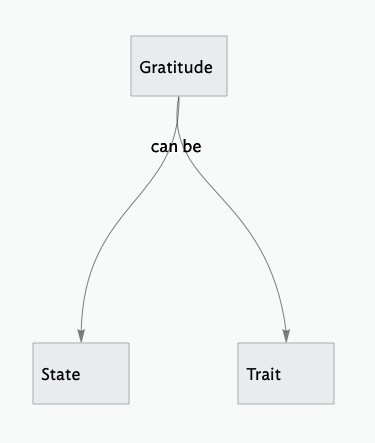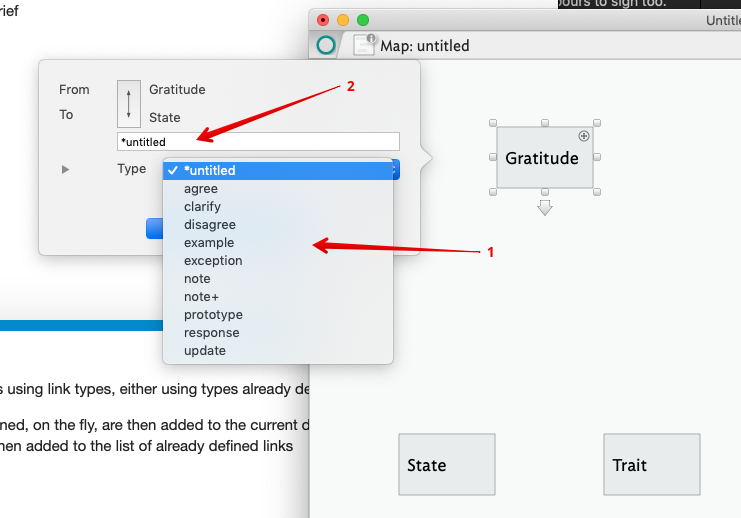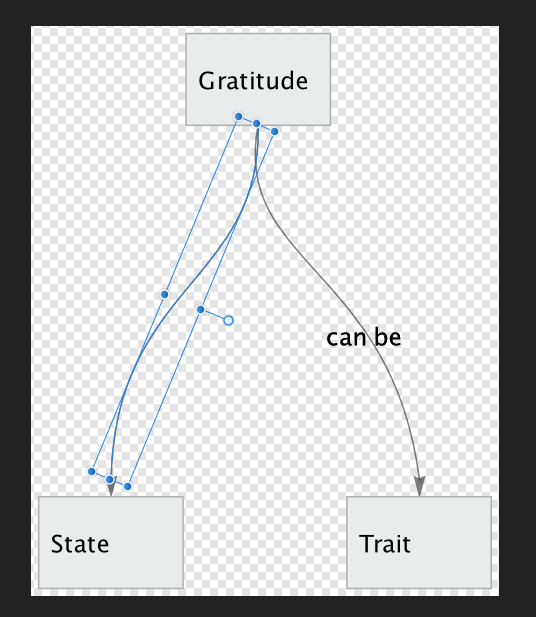You can annotate links using link types, either using types already defined (#1) or adding new ones (type the value in at #2):
Any new types so defined, on the fly, are then added to the current documents list of already defined link types (which are then added to the list of already defined links):

in Tinderbox, links can only link two notes, so a branching 1-to-N link as shown in your video aren’t possible. That said, in all but the visuals this seems the be the same—in linkage terms—as your concept map:

If you want to use the map just visually, you could make one of the notes have no link type and move the label of the other link:

Of course, be aware if you use action code to compute across the links in the latter case, only one of the two is of type ‘can be’.
This scenario highlights the issue of trying to make two apps from different design intent/methodology behave the same. most often we users do this where we want the less used app to be more like the app we are more familiar with as it would lessen our need to learn. In this case the underlying methodologies treat (visual) link (lines) differently. In the CM map, they are part of the argumentation/semantics. In a Tinderbox map they show the hypertextual relationship between objects. Any note my link one or more times to another note and those links can be of any link type or none. Links are not first class objects and have no discrete (textual) metadata beyond the link type. However, action code does allow computation across the hypertext (network) to some degree.
Bear in mind that if you want to fine tune the map visuals, if you export the map as a picture, if you post it into a vector-based image editor, you can make further edits. Here’s our map pasted into Affinity Designer (so, similar to using Adobe Illustrator):
Same Tinderbox map data pasted into Mac Preview:
Items are selectable but Preview isn’t really an image editing tool. I also tried OmniGraffle (Pro) v7. Oddly that imports the data as vector artwork but as a single object that can’t be ungrouped.
I hope that gives a few ideas.






